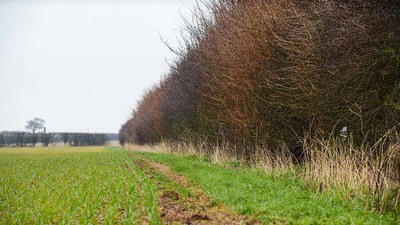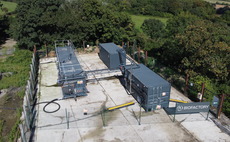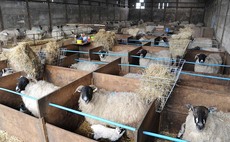
An improved capital grants offer represents the biggest change to this year's Countryside Stewardship (CS) scheme. Strutt and Parker farm consultant Paul Dennison explains what opportunities this presents.
What has changed this year?
In previous years, the standalone capital grants offer within Countryside Stewardship has been relatively restricted.
Last year there were 12 items offered through the old Hedgerows and Boundaries Grant scheme and 12 options available through the Water Capital Grants Scheme.
This year there are 67 options available as part of a new capital grants offer.
Why is this helpful?
Íæż½ã½ã are under huge pressure to raise agriculture's environmental performance, so these grants are a useful opportunity to improve a farm's infrastructure while reducing air and water pollution.
The fact more grants are available through the standalone capital grants offer gives farmers the flexibility to apply for funding without significant management restrictions being imposed on the rest of the holding.
What sort of options are available?
The items eligible for funding fall into one of three groups: boundaries trees and orchards, water quality, and air quality.
This means funding is available for projects as diverse as hedge laying (£9.40 per metre), fencing to protect environmental features or reduce pollution (£4/m), resurfacing gateways (£92/gateway), installing new livestock troughs (£110/trough), concrete yard renewal (£27.14/sq.m), installing a sprayer washdown area (£40/sq.m) and the installation of low ammonia emission flooring for livestock buildings (£/sq.m).
How much funding is available?
For farmers applying to the standalone capital grants offer only, there is a funding cap of £20,000 for each group (up from £10,000 last year).
However, it is possible to draw on all three pots, which means farmers can access up to £60,000 in grant support. All applications for capital grants items can be made online.
The alternative is for farmers to submit a full mid-tier application, which needs to include a mix of capital and field management options.
Where this is done, there will be a cap of £120,000 for air and water quality items and £50,000 for boundaries, trees and orchard items.
Are all farmers in England eligible to apply for capital items?
There are about 20 of the list of 67 capital items on offer where a farmer must request the approval of their local catchment sensitive farming officer (CSFO) before applying.
The land must also be in a high priority area for water or air quality to be eligible.
What is the deadline?
Where CSFO approval is needed, this has to have been requested at least six weeks before you submit an application, which for 2021 means by March 19.
However, for the rest of the items on the list farmers have until April 30 to make an application under the standalone capital grants offer.
Does that mean I am too late to apply for certain items?
Íæż½ã½ã who have missed the March 19 deadline for CSFO approval do still have the option of putting in a full mid-tier application.
It will need to include a mix of capital and management options, but this may be beneficial anyway, as a way of making up some of the financial shortfall left by the phasing out of Basic Payments.
Where CSFO approval is required to support an application for capital items in a mid-tier agreement, the request form must be submitted to the CSFO by June 18.
Applications for a mid-tier agreement with a January 2022 start date close at midnight on July 30.
Boundary Benefits

Strutt and Parker has been helping an estate in Northumberland to use standalone capital grants to improve hedgerows and rebuild drystone walls.
This has involved supporting both of the estate's farm tenants in applying for funding for hedgerows and boundaries restoration, over each of the past three years.
Taking this approach means it has been possible to implement a rolling programme of improvements.
Each farm received the maximum £10,000 in funding that was available for hedgerow and boundary restoration in 2020.
The funding has allowed hundreds of metres of hedgerows to be restored.
Where the cost of restoring stone walls exceeded the value of the grant on offer, the estate has split the difference with the tenant.























